Abortion is the medical term for any interruption of a pregnancy before a fetus is viable (able to survive outside the uterus if born at that time). A viable fetus is usually defined as a fetus of more than 20 to 24 weeks of gestation or weighing at least 500 g. A fetus born before this point is considered a miscarriage or premature or immature birth.
Elective abortion is the planned medical termination of a pregnancy. When the interruption occurs spontaneously, it is clearer to refer to it as a miscarriage. The practice of termination of pregnancy (TOP) covers many aspects of life, is occasionally restricted in many countries, and has versatile legal definitions in different societies (Feldman et al., 2017). The goal of maternal-fetal medicine is to support the treatment of neonates affected by disorders diagnosed during pregnancy. However, the prognosis of several pathologies is so poor that TOP may be considered in countries where it legally exists (Gedikbasi et al., 2010).
The main reason for TOP is central nervous system (CNS) abnormalities. Neural tube defects, especially anencephaly, constituted a substantial cause in the early termination group, while the diagnosis and rate of hydrocephalus increased in the late group. It was found that chromosomal abnormalities are the second most common indication for TOPs, among early and late TOPs. The most common chromosomal abnormality was trisomy 21, constituting 57.0% of chromosomal abnormalities found by studies (Gedikbasi et al., 2010).
Nursing Care Plans and Management
For abortion or elective termination, the nursing plan of care for clients includes assessing biopsychosocial status, giving appropriate instruction/information, promoting coping strategies and emotional support, and preventing postprocedural complications.
Nursing Problem Priorities
The following are the nursing priorities for patients who had an abortion:
- Emotional support and counseling
- Pain management and comfort
- Education and information on post-abortion care
- Assessment and monitoring of physical well-being
- Provide contraceptive counseling and options
- Ensure privacy and maintain confidentiality
- Referral and coordination of follow-up care as needed
Nursing Assessment
Assess for the following subjective and objective data:
- Vaginal bleeding, ranging from light spotting to heavy bleeding
- Abdominal pain or cramping, which can be mild to severe
- Passage of tissue or clots from the vagina
- Decrease in pregnancy symptoms, such as breast tenderness or morning sickness
- Back pain or pelvic pressure
- Signs of infection, such as fever, chills, or foul-smelling discharge
Nursing Diagnosis
Following a thorough assessment, a nursing diagnosis is formulated to specifically address the challenges associated with abortion based on the nurse’s clinical judgment and understanding of the patient’s unique health condition. While nursing diagnoses serve as a framework for organizing care, their usefulness may vary in different clinical situations. In real-life clinical settings, it is important to note that the use of specific nursing diagnostic labels may not be as prominent or commonly utilized as other components of the care plan. It is ultimately the nurse’s clinical expertise and judgment that shape the care plan to meet the unique needs of each patient, prioritizing their health concerns and priorities.
Nursing Goals
Goals and expected outcomes may include:
- The client will recognize the presence of anxiety.
- The client will begin to use positive coping strategies to adjust to the situation.
- The client will use resources/support systems effectively.
- The client will report anxiety reduced to a manageable level.
- The client will identify/use methods that provide relief.
- The client will state that discomfort is minimized and/or controlled.
- The client will verbalize accurate information about the reproductive system.
- The client will explain the proper use of desired contraceptive methods.
- The client will demonstrate appropriate follow-through with treatment and aftercare.
- The client will receive Rho(D) immune globulin within 72 hr of termination, if appropriate.
- The client will verbalize the implications of the Rh factor for planning future pregnancies or for receiving blood transfusions.
- The client will discuss beliefs/values about spiritual issues.
- The client will verbalize acceptance of self/decision.
- The client will acknowledge feelings of anxiety/distress related to making difficult decisions.
- The client will verbalize confidence in the decision to terminate the pregnancy.
- The client will meet psychological needs as evidenced by appropriate expression of feelings, identification of options, and use of resources.
- The client will display a relaxed manner and/or calm demeanor, free of physical signs of distress.
- The client will recognize and report signs/symptoms of complications.
- The client will exhibit stable vital signs.
- The client will maintain a normal level of consciousness.
- The client will display palpable peripheral pulses and warm and dry skin.
- The client will exhibit individually appropriate urine output.
- The client will achieve timely wound healing.
- The client will be free of signs of infection, inflammation, purulent drainage, erythema, and fever.
Nursing Interventions and Actions
Therapeutic interventions and nursing actions for patients with an abortion may include:
1. Helping Patient Through Anxiety and Providing Emotional Support
Termination of pregnancy (TOP) is different from other reproductive losses as it involves a “choice” of the woman to terminate a pregnancy or not, but the event itself is a stressful situation and can become traumatic for some women. Posttraumatic stress (PTS) is associated with perinatal grief, depression, and anxiety for pregnant women with prior medical TOP or miscarriage. For women, anxiety was associated with PTS during pregnancy, but for men, anxiety was associated with PTS during and after delivery (Daugirdaite et al., 2015).
Assess the client’s anxiety and encourage them to express their feelings.
The client and her partner may be dealing with feelings of guilt, and they typically will go through a grieving process and have symptoms of anxiety and depression. Encourage the client and her partner to allow themselves to grieve. The client and her partner may grieve differently; specifically, they may go through the stages of grief in different orders or at different rates (Griebel et al., 2005).
Assess the client’s and her partner’s cultural beliefs.
Polarised debates on abortion result in women being stigmatized and feeling like social outcasts. Abortion laws are also influential as they dictate the timing and medical conditions for which pregnancies can be terminated. The environment in which the client is cared for and the doctor-client relationship also influence the client’s experience. In Vietnam, women’s deference to clinicians prevents them from asking questions, and some women describe feeling ashamed of involving the healthcare provider in an “unpleasant experience.” In contrast, in other medical cultures, women are encouraged to ask questions and, where possible, participate in their care (Lafarge et al., 2014).
Establish a therapeutic relationship, conveying empathy and unconditional positive regard.
Above all, women value empathic and compassionate care. They are grateful when health professionals acknowledge that their pregnancy is wanted and care for them in a non-judgmental way. They drive comfort from health professionals’ acts of kindness, which sometimes can stretch beyond the usual health care professional-client boundaries. Receiving respect and dignity for themselves and their baby is critical (Lafarge et al., 2014).
Provide psychological and mental comfort for the client and her partner.
Comfort from nurses is unique and expected, routinely offered when infants are lost at term, and has recently been taught to other professions. Clients benefit from the comfort provided by nurses perhaps more than any other time. It is critically important that nurses, regardless of their personal feeling about the type of loss, reach out and offer comfort (Catlin, 2018).
Provide comfort measures such as breathing and relaxation techniques.
This can influence physiological responses (BP, pulse, and respiration). Tense muscles may interfere with the procedure. Offer relaxation techniques such as back massage, guided imagery, and the use of touch, if culturally acceptable. Being relaxed may encourage the client to verbalize feelings, thus reducing anxiety and fear.
Explain procedures before they are performed, and stay with the client to provide concurrent feedback.
A physical presence is reassuring and can increase cooperation and promote a sense of security. Counseling about abortion includes help for the client in identifying how she perceives the pregnancy, information about the choices available, and information about the types of abortion procedures (Alden et al., 2019). Providing the client with information enables them to make informed decisions and cope with the termination long-term. Information provision can also be empowering, enabling women to regain control over a situation many feel they have no control over (Lafarge et al., 2014).
Provide a support person/family member to stay with the client, particularly if she is undergoing a second-trimester procedure requiring induction of labor.
The presence of a familiar person can help reduce client anxiety and promote relaxation and coping. According to some studies, anxiety symptoms are associated with a higher incidence of depression and poor social support during pregnancy and postpartum (Loren-Guerrero et al., 2017).
Explore spiritual support as a resource.
Spiritual support of the family’s choice and community support groups may help the family work through the grief and anxiety of any pregnancy loss.
Encourage questions and provide time for the expression of fears.
This may provide an opportunity to identify and clarify misconceptions and offer emotional support. Women value timely, transparent, and unbiased information that they can understand about the abnormality, the termination procedure, and what to expect post-termination (Lafarge et al., 2014).
2. Providing Pain Relief and Comfort
Pain is a predictable feature of the medical termination process; for some women, pain may be intense. In the first trimester of medical termination, pain is typically most acute following the administration of prostaglandins or their analogs. In addition to uterine cramping, pain during the second-trimester medical termination is increased by the passage of the fetus through the cervical canal (Jackson & Kapp, 2011).
Determine the extent/severity and location of discomfort.
Although some discomfort is expected, severe cramping and abdominal tenderness may indicate complications. Predictors of narcotic analgesia use during first-trimester termination include later gestational age, younger client age, and lower parity (Jackson & Kapp, 2011). More pain may be expected with the increasing need for cervical dilation as gestational age advances (Renner et al., 2012).
Assess and systematically monitor the client for a verbal report and objective cues of pain every two hours.
Changes in pain indicate an improvement in the client’s condition or the development of complications. Behavioral and physiologic responses clarify the presence of pain when the client is unable to self-report pain.
Explain to the client the nature of discomfort expected.
Knowledge helps the client to cope with reality. Cramping pain during and for one week after a first-trimester termination is expected. Clients treated with prostaglandins may experience nausea, vomiting, and diarrhea. The traditional alternative to misoprostol for dilatation of the cervix before an elective termination is the laminaria tent. This method causes considerable discomfort to a large number of women during insertion. In a study, women found that misoprostol is easier to use than the laminaria tent, and they feel less pain during its insertion and have less need for analgesics (Gagne et al., 2010).
Provide comfort measures such as relaxation and breathing techniques.
Promoting relaxation is basic to all other methods of pain management and birth preparation, both nonpharmacological and pharmacological. Relaxation techniques require concentration, thus occupying the mind while reducing muscle tension. Cleansing breaths help the client to relax and focus on relaxing and should be the beginning and the end of a breathing pattern.
Position the client for comfort and physiologic response; promote position changes every 30 minutes while the client is awake.
Positioning affects anatomic and physiologic responses such as alteration of cardiac output, enhancement or reduction of the effectiveness of uterine contraction, synchronization of abdominal muscle work, and reduction of pressure on the fetal head. Frequent position changes increase comfort and circulation and relieve fatigue.
Provide information about the use of prescription or nonprescription analgesics.
In the first trimester, medical abortion has become an increasingly popular alternative to surgical abortion in areas where women have the choice of both methods. A 2006 review of five large British and American case series of analgesia used by women undergoing medical abortion during the first trimester concluded that approximately 75% of women experience the pain of severity requiring narcotic analgesia (Jackson & Kapp, 2011).
Administer narcotic/non-narcotic analgesics, sedatives, and antiemetics, as prescribed.
These drugs promote relaxation, decrease pain, and control the side effects of treatment (drug therapy). When compared to women using no prophylactic medications, women using acetaminophen and loperamide during misoprostol-only abortion required less subsequent pain medication and experienced less diarrhea. NSAID medications such as ibuprofen and diclofenac may alleviate pain during both first-trimester abortion and second-trimester abortion using mifepristone+misoprostol and may decrease opioid requirements in women at gestational ages beyond 105 days (Jackson & Kapp, 2011).
Assist with the administration of paracervical block before surgical termination.
A randomized trial demonstrated that paracervical block is effective in decreasing client-reported pain at various steps throughout an induced abortion procedure. Although paracervical block administration was painful, it significantly decreased cervical dilatation and uterine aspiration pain (Renner et al., 2012).
3. Promoting Maternal Safety and Preventing Injuries
Worldwide, some 5 million women are hospitalized each year for treatment of abortion-related complications such as hemorrhage and sepsis, and abortion-related deaths leave 220,000 children motherless. The main causes of death from unsafe abortion are hemorrhage, infection, sepsis, genital trauma, and necrotic bowel. Even safe abortion in developing nations carries risks that depend on the health facility, the skill of the provider, and the gestational age of the fetus (Haddad & Nour, 2009).
Assess the client for any other methods used if the abortion is self-managed.
Though abortion is legal in the United States, at least for now, 2 to 7% of clients seeking this service report efforts to self-induce abortion. Not all methods of self-managed abortion are effective or safe. Women in the United States report using herbs, including rue, sage, St. John’s wort, and black or blue cohosh, among other understudied methods generally thought to be ineffective. Some of these substances have reported toxic reactions and even death, especially rue. In rare cases, women in the United States have also reported the use of other means, such as vaginal insertion of implements or objects or abdominal trauma, to try to disrupt their pregnancy (Harris & Grossman, 2020).
Monitor for excessive nausea and vomiting before and after elective termination.
Nausea and vomiting have been linked with elective termination of pregnancy. Clients who considered the termination of pregnancy due to nausea and vomiting reported more severe vomiting, feelings of depression, and adverse effects of nausea and vomiting on their relationships with their partners (Mazzotta et al., 2001). Postoperative nausea and vomiting incidence is high in dilatation and curettage, around 50% to 60%, for clients undergoing general anesthesia (Fujii, 2010).
Note dyspnea, wheezing, or agitation.
Prostaglandins may cause vasoconstriction or bronchial constriction. Through prostaglandin receptors, prostaglandin can cause many effects in almost every part of the body. The prostaglandin can cause vasoconstriction in vascular smooth muscle cells, induce labor, and regulate hormones. They can also act on the central nervous system to influence pain perception (Malik & Dua, 2022).
Evaluate the level of discomfort.
Abdominal pain, tenderness, and severe cramping may indicate retained tissue or uterine perforation. Multivariate analysis confirmed some clinicians’ impression that misoprostol increases the risk of experiencing severe pain after elective termination when compared with the laminaria tent. The use of laminaria tents can also be very painful and difficult for one out of three clients (Gagne et al., 2010).
Stress importance of returning for a follow-up examination.
Follow-up is necessary to assess healing. A repeat pregnancy test is sometimes done after early first-trimester procedures to assure the procedure was complete. The client should be certain to keep her follow-up appointment in about 2 weeks for postprocedure ultrasonography or a pregnancy test to ensure the pregnancy has ended and obtain contraceptive counseling so she can avoid a repeat procedure.
Provide a contact person in case of emergency.
Providing contact reduces the feelings of fear and anxiety. High levels of depression and anxiety in clients after elective termination of pregnancy suggest the importance of psychological and social support needs. Before or after the procedure, nurses should be informed about identifying and strengthening the client’s social support systems by including the client’s family, friends, and significant others in the process (Topal & Terzioglu, 2019).
Determine cervical status before the procedure. Assist as needed with the insertion of Laminaria tent or prostaglandin (lamicel) gel.
These are inserted 24–48 hours before the procedure to soften the cervix. The traditional alternative to misoprostol for dilatation of the cervix before an elective termination is the laminaria tent. Two studies have compared both methods for dilatation of the cervix before a surgical elective termination during the first trimester. One of them showed a better dilatation of the cervix when laminaria tents were used (Gagne et al., 2010).
Monitor white blood cell count (WBC) after prophylactic administration of methotrexate.
Some healthcare providers give clients who have had the gestational trophoblastic disease a prophylactic course of methotrexate, the drug of choice for choriocarcinoma. However, prophylactic use must be weighed carefully because the drug interferes with white blood cell formation (leukopenia). If malignancy should occur, it can be treated effectively in most instances with methotrexate at that time.
Administer antiemetic agents as prescribed.
Droperidol, a butyrophenone, has been widely accepted as the first-line agent for the management of postoperative nausea and vomiting. Metoclopramide, a benzamide, is an antiemetic widely used in clinical practice, and the efficacy of this drug for the prophylactic management of nausea and vomiting has been studied in women undergoing general anesthesia for elective or therapeutic termination of pregnancy. Serotonin receptor antagonists ondansetron and ramosetron, when given prophylactically, are highly effective in preventing postoperative nausea and vomiting after dilatation and curettage (Fujii, 2010).
Administer RhoGAM to clients with Rh-negative blood after the termination of pregnancy.
After a miscarriage or abortion, because the blood type of the conceptus is unknown, all women with Rh-negative blood should receive Rh (D antigen) immune globulin (RhIG) to prevent the build-up of antibodies in the event the conceptus was Rh-positive.
Assist with/review results of ultrasonography before the procedure as indicated.
An ultrasound helps in confirming gestational age and the size of products of conception. An ultrasound examination should be performed before a second-trimester abortion is done. Many ectopic pregnancies are diagnosed by an early pregnancy ultrasound. Magnetic resonance imaging (MRI) is also effective use for this.
Assist with any additional treatment or procedures necessary to control complications.
IV therapy may need to be instituted, with or without the administration of oxytocin. Elective surgical terminations involve several different techniques, depending on the gestational age at the time the termination is performed. Additional surgery (D & C or hysterectomy) may be needed to control bleeding as indicated. A transfusion may be necessary to replace blood loss. Direct replacement of fibrinogen or another clotting factor may be used to increase coagulation ability.
4. Preventing Hypovolemic Shock
Bleeding is a common symptom in all methods reported by clients who had an unsafe abortion. Retained conceptive product was the most common complication in clients with unsafe abortions (74.7%). 10 cases had a hypovolemic shock, 7 cases had septic shock, and two cases had sepsis with disseminated intravascular coagulation (DIC) (Srinil, 2011). In a ruptured ectopic pregnancy, the amount of bleeding evident often does not reveal the actual amount present. Blood does not reach the vagina to become evident. Progesterone secretion stops, and uterine decidua begins to slough, causing additional bleeding. If internal bleeding progresses to acute hemorrhage, the client may experience shock.
Monitor vital signs, noting increased pulse rate, severe headache, or flushed face.
Changes in vital signs such as (decrease blood pressure, increase heart rate, and increase respiratory rate) indicate a late sign of hypovolemic shock from blood loss. Signs of shock may manifest after 25%-30% blood loss. Begin assessments every 15 minutes and decrease in frequency as her condition improves per agency protocol or health care provider directive. Continue to assess blood pressure every 5 to 15 minutes or continuously with an electronic cuff.
Monitor and assess blood loss. Count and weigh-in or estimate peri pads.
Bleeding is normally like a heavy menstrual period. Excessive loss (more than one large pad per hour for four hours) may indicate retained tissue or uterine perforation. Monitor the amount of vaginal bleeding through pad counts and observe for passage of products of conception tissue. Ask the client about the color of the vaginal bleeding (bright red is significant) and the amount. Instruct her to save any tissue or clots passed and bring them with her to the healthcare facility.
Monitor urine output regularly.
Monitoring urine output is done frequently, as often as every hour, as an indicator of blood volume adequacy. An indwelling catheter may be inserted to monitor the urine output accurately and assess kidney function as well.
Educate the client regarding reporting signs and symptoms of hemorrhage ad adherence to medications prescribed.
The client needs clear instructions on how much bleeding is abnormal and what color changes she should expect in bleeding. She should know that any unusual odor or passing of large clots is also abnormal. Be certain she understands why the medications are being prescribed and the importance of taking them.
Position the client in a flat, supine position if experiencing excessive bleeding.
If excessive vaginal bleeding occurs, immediately position the client flat and massage the uterine fundus to aid contraction. This may be impossible with an early pregnancy because a small uterus is not palpable above the symphysis pubis.
Avoid vaginal or rectal examinations.
Never attempt a pelvic or rectal examination with painless bleeding late in pregnancy because any agitation of the cervix when there is a placenta previa may initiate a massive hemorrhage.
Save expelled conceptus (placenta, membranes, embryo, or fetus).
Anything remaining in the uterus contributes to continued bleeding. The healthcare provider will evaluate if the complete or only partial conceptus was passed. Histology studies may be necessary to determine the cause.
Draw blood specimen for blood typing, Rh and antibody screening, CBC, and type and crossmatch as indicated.
Blood administration is likely after a massive hemorrhage to replace blood loss. This action anticipates the need for fluid replacement therapy as soon as it is available. Direct replacement of fibrinogen or another clotting factor may be used to increase coagulation ability.
Administer oxygen via face mask at 8-10L/minute.
Administering oxygen increases oxygen tension in the circulating blood volume and oxygen delivery to the end organs. A snug face mask more effectively delivers a higher amount per-flow rate.
Administer intravenous fluids as ordered.
Start and maintain an IV site as soon as possible if one is not in place already using a large-bore needle. Veins collapse with worsening hemorrhage. Large-bore needles are necessary for blood transfusions and can still be used for the administration of IV fluids. Crystalloid solutions are usually administered in conjunction with plasma expanders or blood products.
Assist with surgical procedures to mitigate the hemorrhage.
The therapy for a ruptured ectopic pregnancy is laparoscopy to ligate the bleeding vessels and remove or repair the damaged fallopian tube. A rough suture line on a fallopian tube may lead to another tubal pregnancy, so either the tube will be removed or suturing on the tube be done with a microsurgical technique.
5. Preventing Infection
The possibility of infection is minimal when pregnancy loss occurs over a short time, bleeding is self-limiting, and instrumentation is limited. However, there is always a possibility it may occur. Infection tends to develop in clients who have lost appreciable amounts of blood. Such clients need especially close observation to rule out this second and possibly fatal complication.
Monitor and assess for signs of infection.
The client has symptoms of fever and crampy abdominal pain, and her uterus feels tender to palpation. Left untreated, such infection can lead to toxic shock syndrome, septicemia, kidney failure, and death.
Monitor the client’s vital signs, especially the temperature.
Fever can be a transient reaction to a period of decreased fluid intake that preceded the procedure. All temperatures higher than 100.4℉ (38.0℃) require careful evaluation to avoid overlooking the possibility that infection is developing. In septic abortion, the client may have symptoms of fever and crampy abdominal pain, and her uterus feels tender to palpation.
Instruct the client to report symptoms indicating complications (e.g., temperature 100.4° F (38.0°C) or greater, chills, malaise, abdominal pain or tenderness, severe bleeding, heavy flow with clots, foul-smelling, and/or greenish vaginal discharge).
Clients are in the healthcare facility for a short time. Complications, including bleeding and infection, may be manifested days or weeks after the procedure. Be certain that the client knows the danger signs of infection, such as fever, abdominal pain or tenderness, and a foul vaginal discharge. Fever can be a transient reaction to a period of decreased fluid intake that preceded the abortion.
Perform hand hygiene before and after each care activity.
Organisms that cause nosocomial infection are most commonly transmitted by the hands of healthcare providers, nurses, and other hospital personnel. Hand hygiene has often been singled out as the most important procedure in preventing nosocomial infection. Hand hygiene is a simple procedure, but giving good prevention is usually done among hospital nurses (Nasution et al., 2019).
Educate the client about proper perineal hygiene.
The organism responsible for infection after miscarriage is usually Escherichia coli (spread from the rectum forward into the vagina). Caution the client to wipe her perineal area from front to back after voiding and particularly after defecation to prevent the spread of bacteria from the rectal area. Caution her not to use tampons to control vaginal discharge because stasis of any body fluid increases the risk of infection.
Educate the client about the importance of universal sexually transmitted diseases (STD) screening for sexually active women.
Current recommendations by the US Preventative Services Task Force (USPSTF) include universal Chlamydia and gonorrhea screening annually for all sexually active women <25 years of age and for all women with an increased risk regardless of age. Many clients who present for abortion services with unintended pregnancies fall within the recommended categories for gonorrhea and Chlamydia screenings as outlined by the USPSTF. If appropriate, screening may be done immediately prior to induced abortion as long as there is a mechanism for contacting and treating all clients with positive results (Achilles & Reeves, 2011).
Emphasize the importance of follow-up checkups.
Assuming the client recovers from septic abortion, it may still lead to infertility because of the uterine scarring or fibrotic scarring of the fallopian tubes. If the client caused the infection by trying to self-abort, she needs follow-up counseling to assist her to learn better problem-solving methods in the future.
Maintain sterile technique when performing procedures or providing care.
Medical asepsis prevents or limits the introduction of bacteria and reduces the risk of nosocomial infection.
Administer antibiotics as prescribed.
Doxycycline is commonly recommended for prophylaxis and is used by over 80% of US abortion providers who use prophylactic antibiotics. Doxycycline has been shown to substantially reduce the risk of post-abortion infection in several randomized placebo-controlled trials when used as a short course at the time of the abortion. A nitroimidazole, such as metronidazole, is an alternate choice. With both doxycycline and metronidazole, there is a very low incidence of allergic reactions, and the major adverse effect is nausea. The Society of Family Planning recommends that antibiotic prophylaxis for surgical abortion be initiated before the procedure to maximize efficacy (Achilles & Reeves, 2011).
Assist in the local application of an antiseptic solution to the vaginal area before the procedure.
Chlorhexidine may be more effective than povidone-iodine at reducing bacteria within the vagina, although neither alters the risk of post-procedure infection. The Society of Family Planning finds no evidence that vaginal preparation with chlorhexidine or povidone-iodine is superior to saline alone. However, there appears to be no harm from using these solutions either (Achilles & Reeves, 2011).
6. Initiating Patient Education and Health Teachings
Information provision can be seen as a way to empower women to make informed decisions. A lack of information not only generates distress but also maintains women in a state of passivity and uncertainty, leaving them unprepared for the termination and its aftermath. In comparison, women welcome information enabling them to make decisions that are right for them. Information provision can also be empowering, enabling women to regain control over a situation many feel they have no control over (Lafarge et al., 2014).
Assess the level of client knowledge, and provide information about reproduction. Use charts and diagrams.
Knowledge is essential to prevent future unplanned pregnancies. Written and visual materials are clearer, more concrete, and easily understood. In Spain, a large increase in elective abortions was associated with a remarkable increase in the number of women who used contraceptive methods and improvements in the education level during the study periods. Inadequate or inconsistent use of contraceptive methods, especially the condom and the pill, may account for the increased utilization of abortion (Dueñas et al., 2011).
Ascertain religious and cultural practices or preferences.
The stigma attached to abortion generates an atmosphere of secrecy and shame,e, and many women report a fear of being judged. The Israeli study refers to termination for a fetal abnormality as a “taboo” and describes women facing a “wall of silence.” This leads women to censor themselves, only sharing part of their story, labeling their experience a miscarriage, or only disclosing the full story to a selected few (Lafarge et al., 2014).
Discuss alternative methods of contraception.
This provides the client the ability to choose the best contraception for her. Ovulation may occur before menses resume, so contraception needs to be considered at this time. The client and her partner should choose a contraceptive method or methods best suited to them. A variety of contraceptive methods are available with various effectiveness rates, advantages, and disadvantages.
Speak calmly and clearly in words appropriate to the client’s partner’s and family’s understanding.
In an already emotionally charged situation, the nurse’s voice can either increase or reduce anxiety. A calm, matter-of-fact approach can be helpful for the nurse. Listening to what the woman has to say and encouraging her to speak is essential. Neutral responses such as “Oh,” “Uh-huh,” and “Umm,” and nonverbal encouragement such as nodding, maintaining eye contact, and the use of touch help set an open, accepting environment.
Give specific written instructions about the contraceptive chosen.
The client may have a method of contraception prescribed before discharge. Because of the anxiety and stress associated with the termination, verbal information may not be retained. The woman will need help exploring the meaning of the various alternatives and consequences to herself and her significant others.
Reinforce postabortion instructions concerning the use of tampons and resumption of sexual activity, exercise, and prescribed antibiotics, if applicable. Provide written instructions.
The stress/anxiety caused by the procedure can decrease the client’s ability to process and retain information. Written instructions can be reviewed when necessary. Postabortion instructions differ among health care providers. Tampons should not be used for at least 3 days or should be avoided for up to 3 weeks, and resumption of sexual intercourse may be permitted within 1 week or discouraged for 2 weeks. The client may shower daily but should avoid douches of any type.
Identify signs/symptoms to be reported to the healthcare provider.
Prompt evaluation/intervention may prevent or limit complications. Instruction is given to watch for excessive bleeding and other signs of complications. A dilatation and curettage has the potential risk of uterine perforation from the instruments used and carries an increased risk of uterine infection because of the greater cervical dilatation.
Provide information about the implications of Rho (D)-negative blood and the need for Rh IgG administration.
The client may not be aware of her blood type or the implications for future pregnancies if she is Rho(D)-negative. Understanding may promote positive self-care, enhance cooperation, and help prepare the client for future pregnancies.
Verify Rh-negative status and administer RhIgG. Give 50 mg for early abortion; otherwise, the dosage is the same as for delivery or fetal hemorrhage in the nonsensitized client.
Because the blood type of the conceptus is unknown with either medical or surgical termination, all clients with Rh-negative blood should receive Rho(D) immune globulin (RhoGAM or RHIG) within 72 hours after the procedure to prevent the build-up of antibodies in the event the conceptus was Rh-positive. For the Rho(D)-negative client, RhIgG prevents anti-Rh-positive antibody formation so that negative effects on future pregnancies are avoided. Microdoses are given for early abortions, which is sufficient for up to 12 weeks of gestation. Fetal RBCs may be noted as early as 38 days after conception.
Include the client, partner, and family in decision-making as much as possible during hospitalization and follow-up care after discharge.
Evidence-based nursing practice stresses the importance of client and family preferences in decision-making. Adequate social support for individuals positively affects their mental and physical health. It was also observed that the depression levels of clients who had adequate social support during the pregnancy period before abortion were low after abortion (Topal & Terzioglu, 2019).
Determine the client’s religious or spiritual orientation, current involvement, and the presence of conflicts in current circumstances.
This provides a baseline for planning care and accessing appropriate resources. It also helps the nurse appropriately address the client and her partner’s or family’s concerns regarding the termination.
Note the sense of futility, feelings of hopelessness and helplessness, and lack of motivation to help self.
These thoughts and feelings can result in the client feeling paralyzed and unable to move forward to resolve the situation. The client loses the immediate future they had imagined, having often gone to great lengths to prepare for the infant’s arrival. A loss of reproductive self-esteem is also observed, with some clients feeling that they have failed to bear a healthy child, and failed themselves and those around them (Lafarge et al., 2014).
Determine support systems available to client and partner.
The presence or lack of support systems can affect the client’s recovery. Information about community resources for postabortion counseling may be needed. If family or friends cannot be involved, scheduling time for nursing personnel to give necessary support is an essential component of the plan for care.
Assist with problem-solving within the client’s ethical and religious beliefs.
The ability to project the consequences of a decision or to explore alternatives may be hindered by anxiety and emotion. Some struggle with their values and spiritual beliefs over the decision to terminate. Most women depict their decision-making as a choice between two “alternatives, both of which are unpleasant,” and deciding to terminate because the situation was hopeless. They feel this is not a real choice and that their agency may be limited. (Lafarge et al., 2014)
Support the client’s decision.
The client may have few support systems available at this time and may need a nonjudgmental resource. The client may be grateful when the health care professional acknowledges that their pregnancy is wanted and care for them in a non-judgemental way. They derive comfort from health care professionals’ acts of kindness, which sometimes can stretch beyond the usual nurse-client boundaries (Lafarge et al., 2014).
Note comments indicating feelings of guilt, negative self-concept/self-esteem, and ethical or religious value conflicts.
There may be a conflict with family/significant other(s) regarding the morality of the client’s decision, which can create confusion for the client. Social context greatly impacts women’s experiences. Polarised debates on abortion result in women being stigmatized and feeling like social outcasts (Lafarge et al., 2014).
Listen to expressions of inability to find meaning in life or reason for living. Evaluate for suicidal ideation.
This may indicate a need for further intervention to prevent a suicide attempt Abortion is linked to a dramatic increase in suicide risk. This statistical finding is corroborated by interview-based studies, which have consistently shown extraordinarily high levels of suicidal ideation (30-55%) and reports of suicide attempts (7-30%) among women who have had an abortion (Elliot Institute, 2000).
Discuss alternatives to abortion with the client and significant other(s), if present. Maintain a nonjudgmental attitude.
A decision based on a rational choice is less likely to result in conflict. The client should be educated that elective termination is not ideal as a method of reproductive life planning but should be used as a remediation for failed contraception. In addition, women should be counseled about other options such as adoption or single parenthood before the procedure.
Use therapeutic communication skills of reflection and active listening.
Listening to what the woman has to say and encouraging her to speak is essential. Neutral responses such as “Oh,” “Uh-huh,” and “Umm,” and nonverbal encouragement such as nodding, maintaining eye contact, and use of touch help set an open, accepting environment. Clarifying, restating, and reflecting on statements, open-ended questions and feedback are communication techniques that can be used to maintain a realistic focus on the situation and bring the woman’s concerns into the open.
Explain the grief response that may occur.
The client may not expect to feel the loss. Whether the client discloses their full story or not, the client’s grief is disenfranchised as their loss is generally not sanctioned by society. Because theirs is a “chosen loss” and “nobody knew the baby”, the client may feel inadequate in expressing their grief (Lafarge et al., 2014).
Stress the importance of follow-up visits.
There may be delayed psychological reactions, which can be assessed at the follow-up visit along with the physical status. The client should be certain to keep her follow-up appointment in about 2 weeks for postprocedure ultrasonography or a pregnancy test to ensure the pregnancy has ended and obtain contraceptive counseling so she can avoid a repeat procedure.
Refer to clergy/spiritual advisors, support groups, or professional counseling.
A client’s emotional reaction may vary depending on her desire for this pregnancy and her available support network. Some clients may need additional counseling before and after abortion to help them resolve feelings of conflict or guilt. Referral to a community support group for parents who have experienced a miscarriage can be very helpful during this grief process.
Ascertain circumstances of conception and response of family/significant other.
This allows the nurse to determine whether the client/couple has explored alternatives. The decision to terminate a pregnancy may have been based on an inability to problem-solve or a lack of support and resources. Many women set conditions under which they found elective termination acceptable. Some found elective termination only tolerable for women living in extremely adverse circumstances or in situations in which they could not be held responsible for getting pregnant (van Ditzhujizen et al., 2019).
Evaluate the influence of family and significant other(s) on the client.
Conflict can arise within the client herself as well as within the family. This may allow the nurse to encourage positive forces or provide support where it is lacking. Clients who experienced high levels of decision difficulty more frequently reported that their sexual partners were unsupportive or had put them under pressure to choose elective termination. The younger ones, especially, experienced pressure from their parents to have an elective termination (van Ditzhujizen et al., 2019).
Note expressions of indecision, dependence on others, and inability to manage own activities of daily living.
Clients who experienced high levels of decision difficulty often characterize themselves as indecisive in general, whereas almost none of the clients who experienced low levels of decision difficulty describe themselves as such. Indecisive women found the elective termination decision especially difficult given the irreversibility of the choice. They are also afraid to dismiss important matters when considering options (van Ditzhujizen et al., 2019).
Assess the presence of positive coping skills that have been used in the past.
When the individual has coping skills that have been successful in the past, they may be used in the current situation to relieve tension and preserve the client’s sense of control.
Encourage the client to talk about the issues and processes used to problem-solve and make decisions regarding termination.
Literature suggests that fears and fantasies around elective termination are commonly present in the decision-maker’s thinking. Perceived pressure from the partner, as well as strong positive feelings towards the pregnancy, negative elective termination views, and experiencing general difficulty in making decisions have been associated with difficulties in decision-making (van Ditzhujizen et al., 2019). Encourage the client to talk about what is happening at this time to gather clues to assist her in coping and regaining equilibrium.
Provide explanations about the procedure desired by the client, pre-procedural and post-procedural tests, examinations, and follow-ups.
Lack of knowledge about the procedures, reproduction, or self-care may contribute to the client’s/family’s inability to cope positively with this event which may be behaviorally manifested by the client canceling appointments or verbalizing ambivalence. Ongoing verbalization can foster positive decision-making by eliminating the fear of the unknown and reinforcing the reasons for and appropriateness of the decision.
Assist the client in looking at alternatives and use a problem-solving process to validate the decision. Involve significant others as appropriate.
This helps the client reinforce her reasons for her decision and be comfortable that this is the course she wants. Ambivalence is manifested in the decision to terminate the pregnancy as it involves conflicting feelings. It is a subtle balancing act between the baby’s prospects and potential quality of life and the client’s, her partner’s, and children’s needs (Lafarge et al., 2014).
Discuss feelings of self-blame or projection of blame on others.
Although these mechanisms are protective at the moment of crisis, they eventually are counterproductive and intensify feelings of helplessness and hopelessness. Similar to clients who experience high levels of decision difficulty, clients who experience low levels of decision difficulty stressed the woman’s responsibility for preventing an unwanted pregnancy. Many blamed themselves for not having used proper birth control and sometimes felt ashamed and foolish for getting pregnant (van Ditzhujizen et al., 2019).
Act as a liaison and lend support to significant other(s).
This helps reduce stress and encourages significant other(s) to be supportive of the client. A client’s emotional reaction may vary depending on her desire for this pregnancy and her available support network. Provide both physical and emotional support. In addition, prepare the client and her family for the assessment process and answer their questions about what is happening.
Provide positive feedback for efforts and progress noted.
Remembering that this is not a decision taken lightly helps plan nursing care to make an elective termination as nontraumatic as possible. Be certain to provide the client undergoing termination procedures the same kind of explanations and support that clients in labor receive.
Remain with the client during examinations and the procedure. Provide both physical and emotional support.
The physical presence of a nurse can help the client feel accepted and reduce stress. Providing sensitive listening, counseling, and anticipatory guidance to the client and her family will allow them to verbalize their feelings and ask questions about future pregnancies.
Obtain/review informed consent.
This depends on agency guidelines. No procedure should be performed unless the client freely consents to it. The client must fully understand the alternatives, the types of abortions, and expected recovery. Misinformation and gaps in knowledge are identified and corrected. The record is then reviewed for the signed informed consent, and the client’s understanding is verified.
Review safe options available based on gestation.
This assists the client in making an informed decision. Counseling about abortion includes help for the client in identifying how she perceives the pregnancy, information about the choices available (having an elective termination or carrying the pregnancy to term and then either keeping the infant or placing the infant for adoption), and information about the types of abortion procedures.
Refer for additional counseling or resources, if needed.
Some clients may be more affected by the decision and may require additional support and/or education or genetic counseling. The majority of clients report they are relieved with their decision following elective termination of pregnancy. Those few who express sadness and guilt may need to be referred for professional counseling so they can integrate and accept this event in their lives.
Recommended Resources
Recommended nursing diagnosis and nursing care plan books and resources.
Disclosure: Included below are affiliate links from Amazon at no additional cost from you. We may earn a small commission from your purchase. For more information, check out our privacy policy.
Ackley and Ladwig’s Nursing Diagnosis Handbook: An Evidence-Based Guide to Planning Care
We love this book because of its evidence-based approach to nursing interventions. This care plan handbook uses an easy, three-step system to guide you through client assessment, nursing diagnosis, and care planning. Includes step-by-step instructions showing how to implement care and evaluate outcomes, and help you build skills in diagnostic reasoning and critical thinking.

Nursing Care Plans – Nursing Diagnosis & Intervention (10th Edition)
Includes over two hundred care plans that reflect the most recent evidence-based guidelines. New to this edition are ICNP diagnoses, care plans on LGBTQ health issues, and on electrolytes and acid-base balance.

Nurse’s Pocket Guide: Diagnoses, Prioritized Interventions, and Rationales
Quick-reference tool includes all you need to identify the correct diagnoses for efficient patient care planning. The sixteenth edition includes the most recent nursing diagnoses and interventions and an alphabetized listing of nursing diagnoses covering more than 400 disorders.

Nursing Diagnosis Manual: Planning, Individualizing, and Documenting Client Care
Identify interventions to plan, individualize, and document care for more than 800 diseases and disorders. Only in the Nursing Diagnosis Manual will you find for each diagnosis subjectively and objectively – sample clinical applications, prioritized action/interventions with rationales – a documentation section, and much more!

All-in-One Nursing Care Planning Resource – E-Book: Medical-Surgical, Pediatric, Maternity, and Psychiatric-Mental Health
Includes over 100 care plans for medical-surgical, maternity/OB, pediatrics, and psychiatric and mental health. Interprofessional “patient problems” focus familiarizes you with how to speak to patients.

See Also
Other recommended site resources for this nursing care plan:
- Nursing Care Plans (NCP): Ultimate Guide and Database MUST READ!
Over 150+ nursing care plans for different diseases and conditions. Includes our easy-to-follow guide on how to create nursing care plans from scratch. - Nursing Diagnosis Guide and List: All You Need to Know to Master Diagnosing
Our comprehensive guide on how to create and write diagnostic labels. Includes detailed nursing care plan guides for common nursing diagnostic labels.
Other care plans related to the care of the pregnant mother and her baby:
- Abortion (Termination of Pregnancy) | 8 Care Plans
- Cervical Insufficiency (Premature Dilation of the Cervix) | 4 Care Plans
- Cesarean Birth | 11 Care Plans
- Cleft Palate and Cleft Lip | 7 Care Plans
- Gestational Diabetes Mellitus | 8 Care Plans
- Hyperbilirubinemia (Jaundice) | 4 Care Plans
- Labor Stages, Induced, Augmented, Dysfunctional, Precipitous Labor | 45 Care Plans
- Neonatal Sepsis | 8 Care Plans
- Perinatal Loss (Miscarriage, Stillbirth) | 6 Care Plans
- Placental Abruption | 4 Care Plans
- Placenta Previa | 4 Care Plans
- Postpartum Hemorrhage | 8 Care Plans
- Postpartum Thrombophlebitis | 5 Care Plans
- Prenatal Hemorrhage (Bleeding in Pregnancy) | 9 Care Plans
- Preeclampsia and Gestational Hypertension | 6 Care Plans
- Prenatal Infection | 5 Care Plans
- Preterm Labor | 7 Care Plans
- Puerperal & Postpartum Infections | 5 Care Plans
- Substance Abuse in Pregnancy | 9 Care Plans
References and Sources
References and sources to help you further your reading about elective termination.
- Achilles, S. L., & Reeves, M. F. (2011, April). Prevention of infection after induced abortion. Contraception, 83(4), 295-309.
- Alden, K., Cashion, M. C., Lowdermilk, D. L., Olshansky, E., & Perry, S. E. (2019). Maternity and Women’s Health Care E-Book. Elsevier Health Sciences.
- Catlin, A. (2018, August 1). Pregnancy Loss, Bereavement, and Conscientious Objection in Perioperative Services. Ethics for Perianesthesia Nursing, 33(4), 553-559.
- Daugirdaite, V., van den Akker, O., & Purewal, S. (2015). Posttraumatic Stress and Posttraumatic Stress Disorder after Termination of Pregnancy and Reproductive Loss: A Systematic Review. Journal of Pregnancy, 2015(646345), 14.
- Doenges, M. E., Moorhouse, M. F., & Murr, A. C. (2010). Nursing Care Plans: Guidelines for Individualizing Client Care Across the Life Span. F.A. Davis Company.
- Dueñas, J. L., Lete, I., Bermejo, R., Arbat, A., Perez-Campos, E., Martinez-Salmean, J., Serrano, I., Doval, J. L., & Coll, C. (2011, January). Trends in the use of contraceptive methods and voluntary interruption of pregnancy in the Spanish population during 1997–2007. Contraception, 83(1), 82-87.
- Elliot Institute. (2000, April). Abortion Four Times Deadlier Than Childbirth. The Post-Abortion Review, 8(2).
- Feldman, N., Melcer, Y., Hod, E., Levinsohn-Tavor, O., Svirsky, R., & Maymon, R. (2017). Termination of pregnancy due to fetal abnormalities performed after 32 weeks’ gestation: survey of 57 fetuses from a single medical center. The Journal of Maternal-Fetal & Neonatal Medicine.
- Fujii, Y. (2010). Prevention of nausea and vomiting during termination of pregnancy. International Journal of Gynecology and Obstetrics, 111, 3-7.
- Gagne, A., Guilbert, E., Quellet, J., Roy, V., & Tremblay, J.-G. (2010, March). Assessment of Pain After Elective Abortion Relating to the Use of Misoprostol for Dilatation of the Cervix. Journal of Obstetrics and Gynaecology Canada, 32(3), 244-253.
- Gedikbasi, A., Gul, A., Oztarhan, K., Akun, M. A., Sargin, A., Ozek, S., Kavuncuoglu, S., & Ceylan, Y. (2010). Feldman, N., Melcer, Y., Hod, E., Levinsohn-Tavor, O., Svirsky, R., & Maymon, R. (2017). Termination of pregnancy due to fetal abnormalities performed after 32 weeks’ gestation: survey of 57 fetuses from a single medical center. The Journal of Maternal-Fet. Journal of Turkish-German Gynecological Association, 11, 1-7.
- Griebel, C. P., Halvorsen, J., Golemon, T. B., & Day, A. A. (2005, October 1). Management of Spontaneous Abortion. American Family Physician, 72(7).
- Haddad, L. B., & Nour, N. M. (2009). Unsafe Abortion: Unnecessary Maternal Mortality. Reviews in Obstetrics and Gynecology, 2(2), 122-126.
- Harris, L. H., & Grossman, D. (2020, March 12). Complications of Unsafe and Self-Managed Abortion. The New England Journal of Medicine, 382, 1029-1040.
- Hasselbacher, L. A., Hebert, L. E., Liu, Y., & Stulberg, D. B. (2020, June 29). “My Hands Are Tied”: Abortion Restrictions and Providers’ Experiences in Religious and Nonreligious Health Care Systems. Perspectives on Sexual and Reproductive Health, 52(2), 107-115.
- Jackson, E., & Kapp, N. (2011, February). Pain control in first-trimester and second-trimester medical termination of pregnancy: a systematic review. Contraception, 83(2), 116-126.
- Lafarge, C., Mitchell, K., & Fox, P. (2014). Termination of pregnancy for fetal abnormality: a meta-ethnography of women’s experiences. Reproductive Health Matters, 22(44).
- Leifer, G. (2018). Introduction to Maternity and Pediatric Nursing. Elsevier.
- Loren-Guerrero, L., Gascon-Catalan, A., Pasierb, D., & Romero-Cardiel, M.A. (2017, October 25). Assessment of significant psychological distress at the end of pregnancy and associated factors. Archives of Women’s Mental Health, 21, 313-321.
- Malik, K., & Dua, A. (2022, May 15). Prostaglandins – StatPearls. NCBI. Retrieved June 6, 2022, from
- Mazzotta, P., Stewart, D.E., Koren, G., & Magee, L.A. (2001, March). Factors associated with elective termination of pregnancy among Canadian and American women with nausea and vomiting of pregnancy. Journal of Psychosomatic Obstetrics & Gynecology, 22, 7-12.
- Nasution, T. A., Yunita, R., Pasaribu, A. P., & Ardinata, F. M. (2019, October 14). Effectiveness Hand Washing and Hand Rub Method in Reducing Total Bacteria Colony from Nurses in Medan. Open Access Macedonian Journal of Medical Sciences, 7(20), 3380-3383.
- Pillitteri, A. (2010). Nursing Care of a Family Experiencing a Sudden Pregnancy Complication. In Maternal & Child Health Nursing: Care of the Childbearing & Childrearing Family (6th ed.). Wolters Kluwer Health/Lippincott Williams & Wilkins.
- Renner, R.-M., Nichols, M. D., Jensen, J. T., Li, H., & Edelman, A. B. (2012, May). Paracervical Block for Pain Control in First-Trimester Surgical Abortion. Obstetrics & Gynecology, 119(5), 1030-1037.
- Ricci, S. S., Kyle, T., & Carman, S. (2013). Maternity and Pediatric Nursing. Wolters Kluwer Health/Lippincott Williams & Wilkins.
- Silbert-Flagg, J., & Pillitteri, A. (2018). Maternal & Child Health Nursing: Care of the Childbearing & Childrearing Family. Wolters Kluwer.
- Srinil, S. (2011). Factors Associated with Severe Complications in Unsafe Abortion. J Med Assoc Thai, 94(4), 408-414.
- Swearingen, P. L., & Wright, J. (2019). All-in-One Nursing Care Planning Resource – E-Book: Medical-Surgical, Pediatric, Maternity, and Psychiatric-Mental Health (P. L. Swearingen & J. Wright, Eds.). Elsevier Health Sciences.
- Topal, C. A., & Terzioglu, F. (2019, April 20). Assessment of depression, anxiety, and social support in the context of therapeutic abortion. Perspectives in Psychiatric Care, 55(4), 618-623.
- van Ditzhujizen, J., Brauer, M., Boejie, H., & van Nijnatten, C. H.C.J. (2019, February 22). Dimensions of decision difficulty in women’s decision-making about abortion: A mixed methods longitudinal study. PLoS ONE, 14(2).
Reviewed and updated by M. Belleza, R.N.





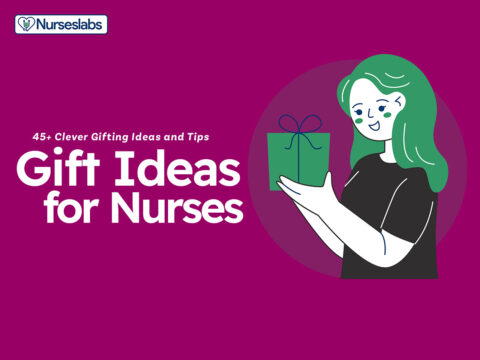



















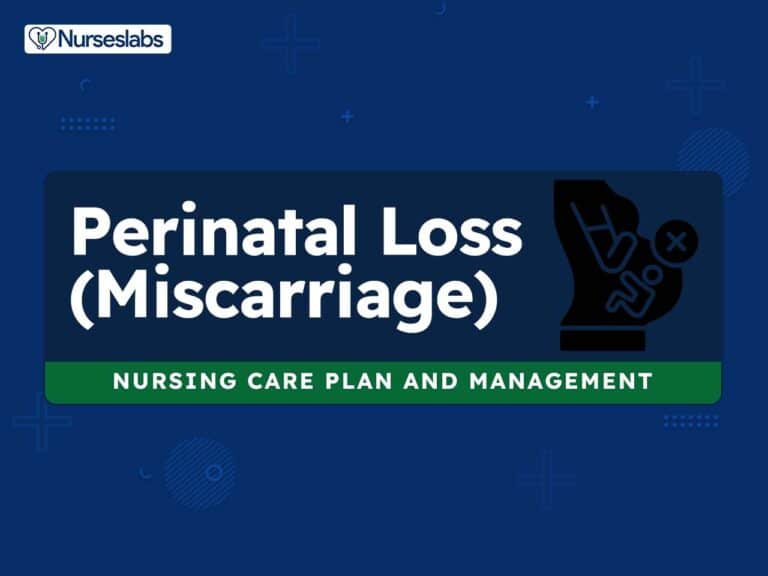
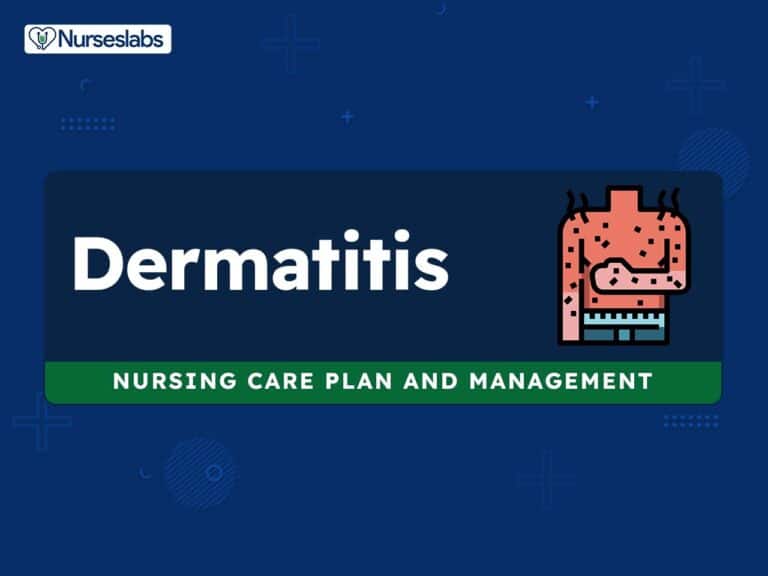
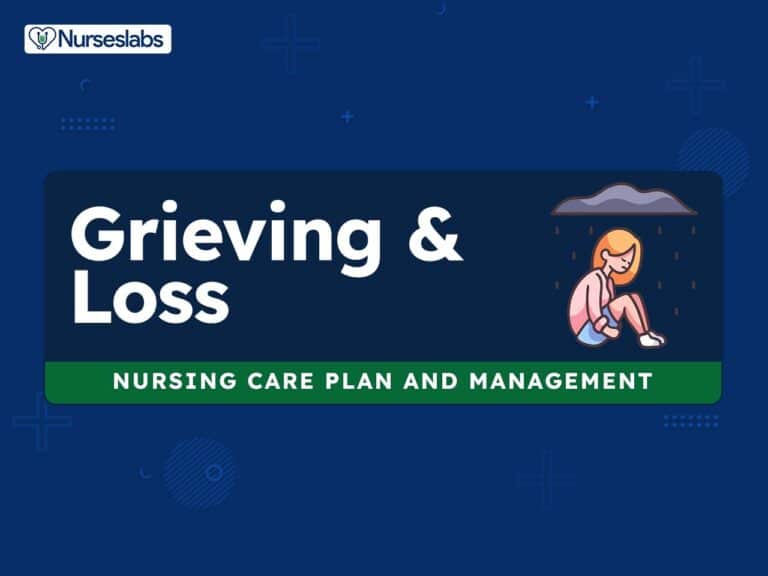
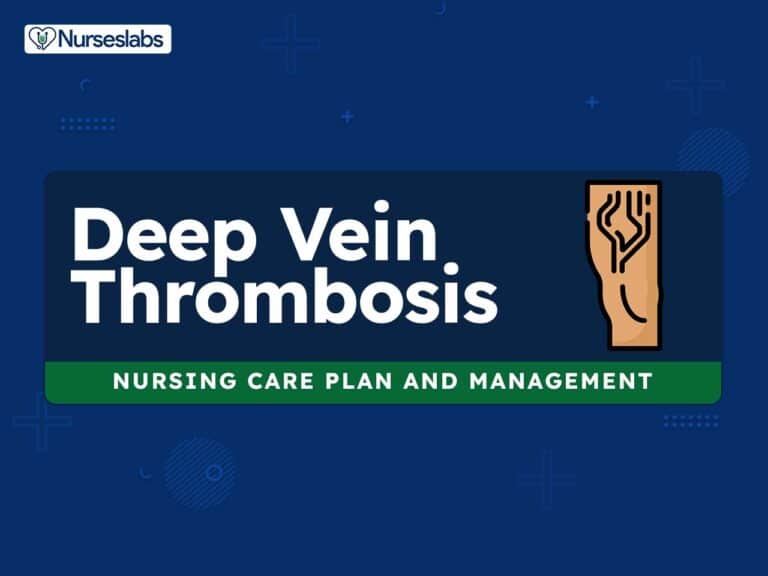
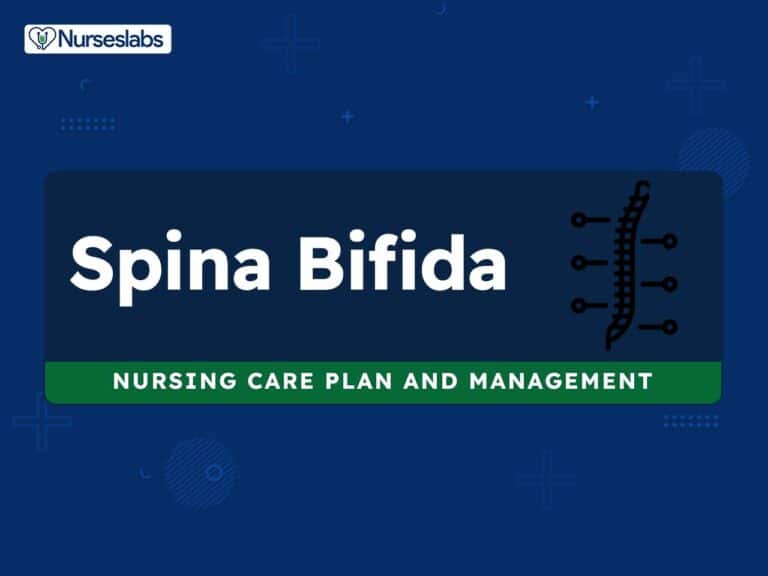
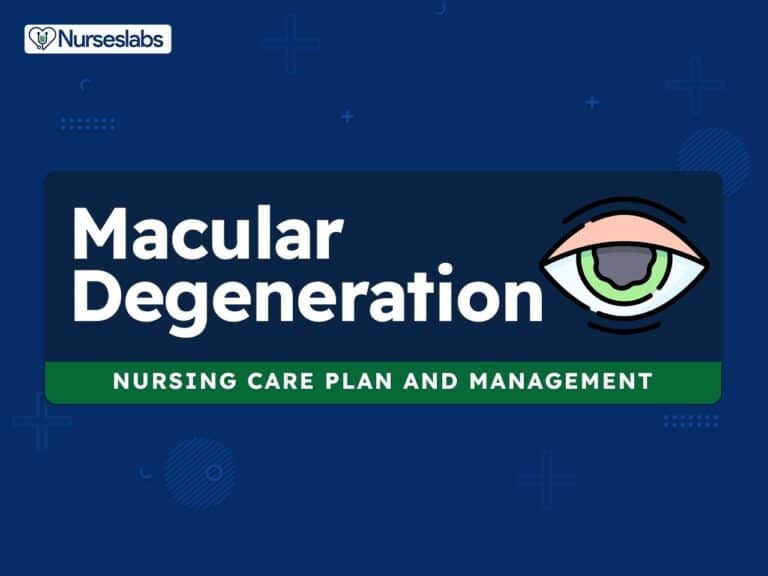
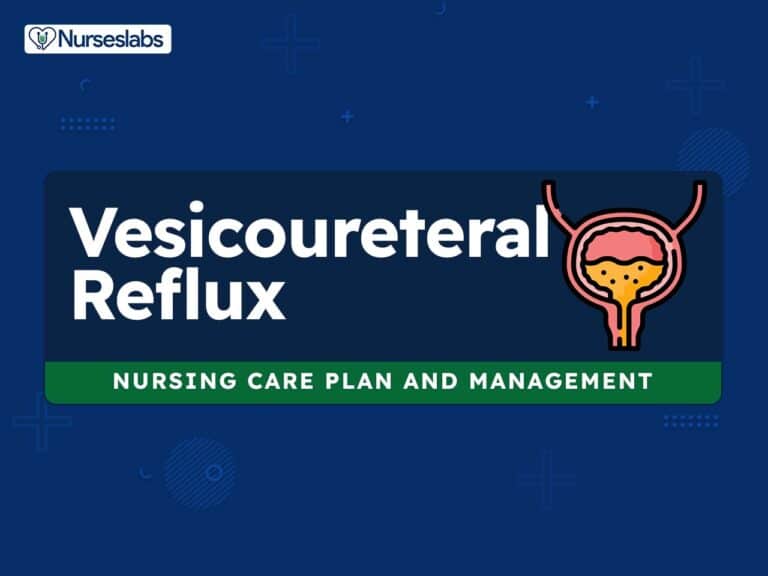
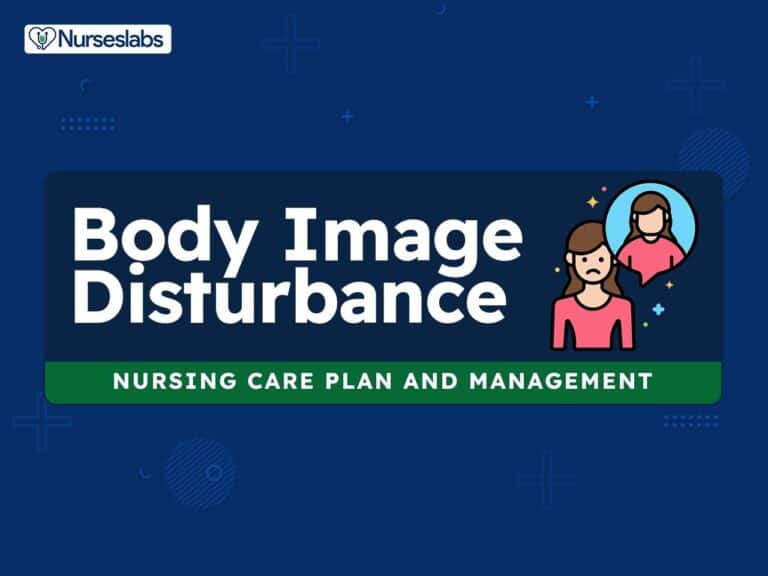
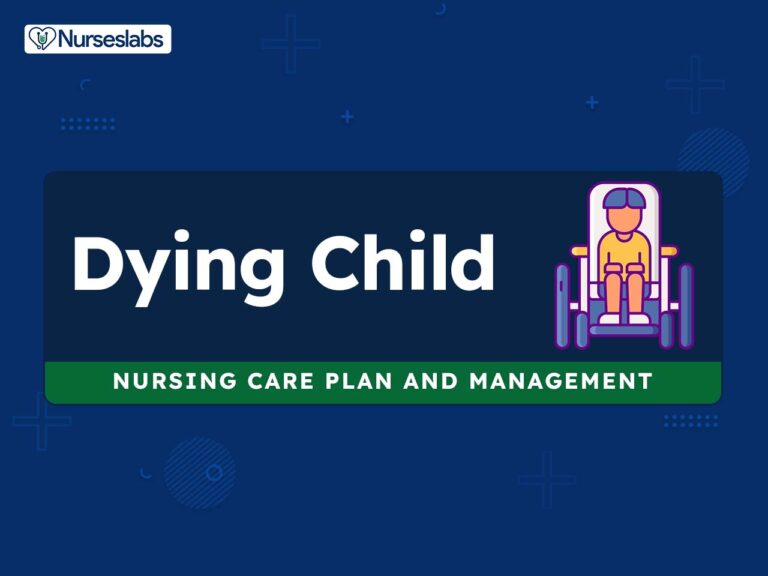

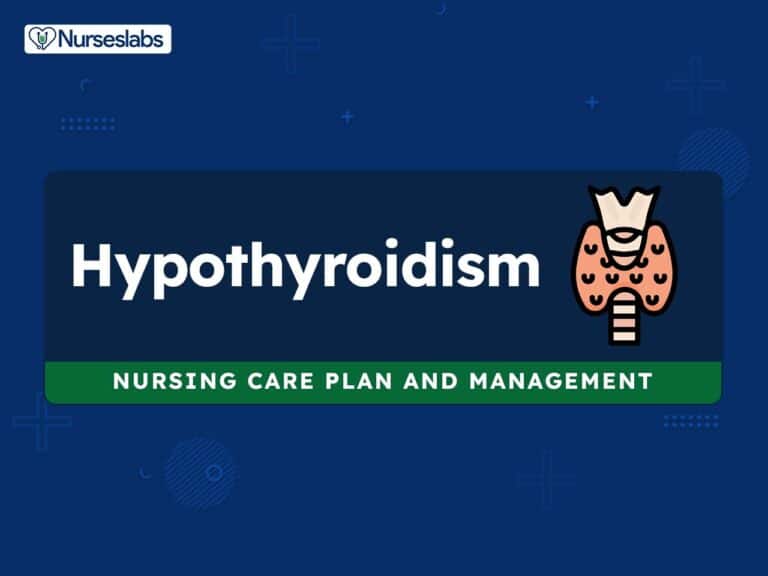

Leave a Comment